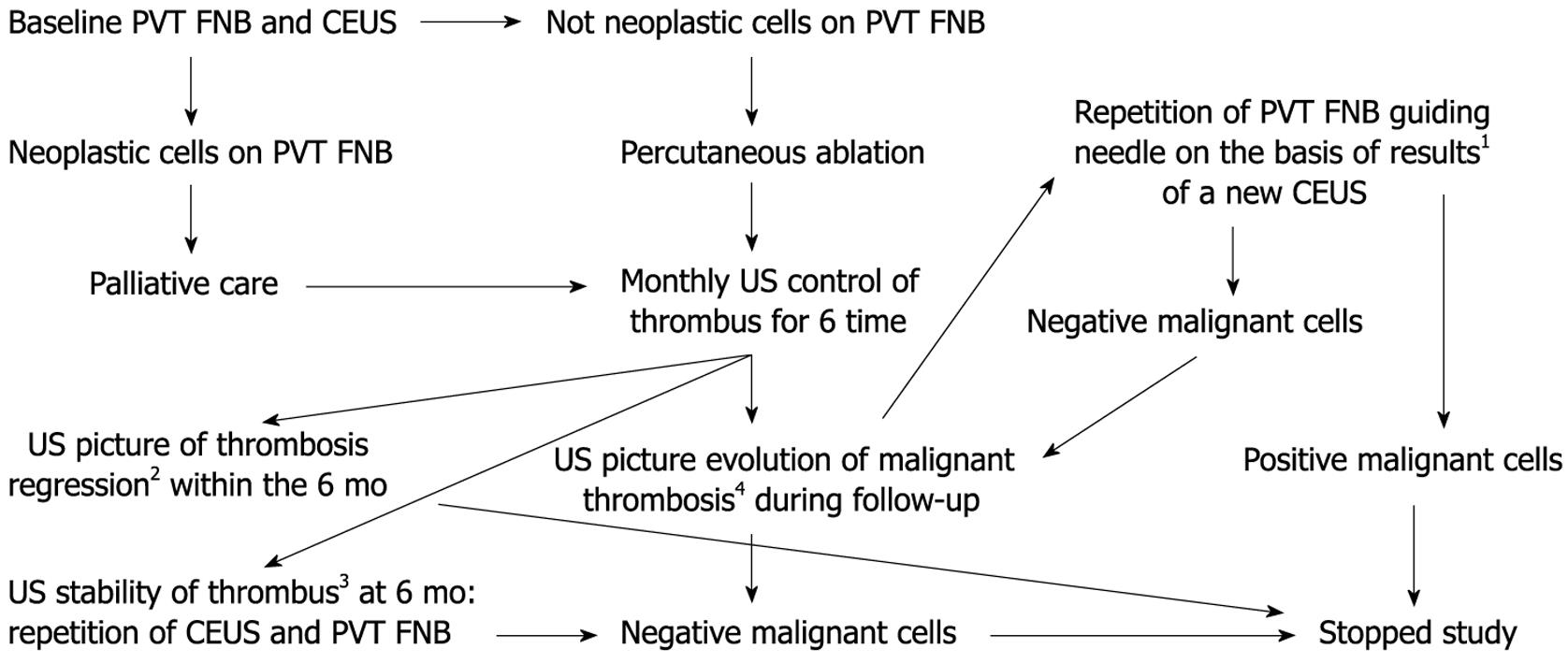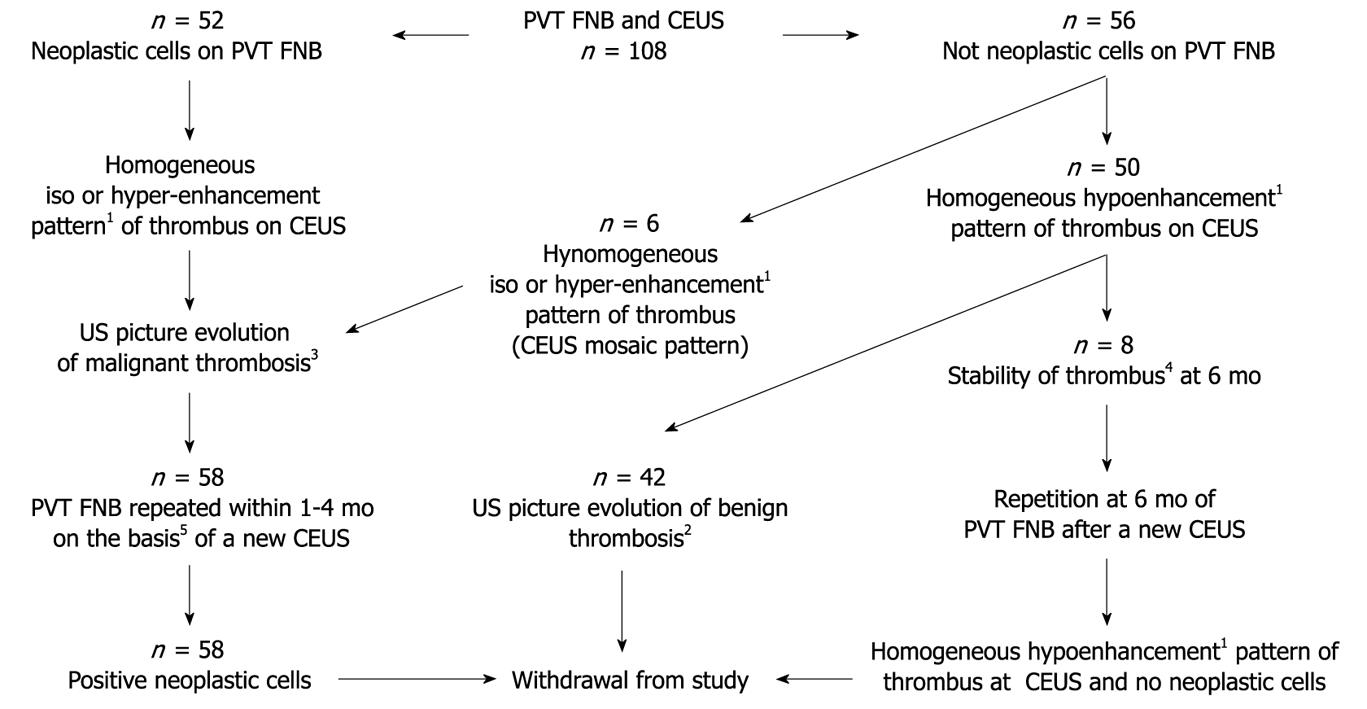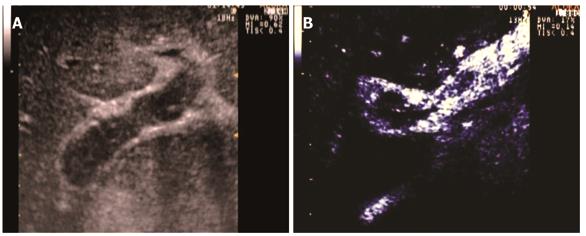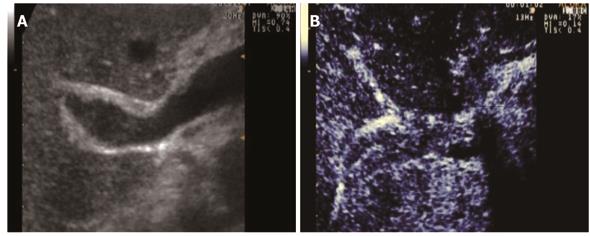Copyright
©2009 The WJG Press and Baishideng.
World J Gastroenterol. May 14, 2009; 15(18): 2245-2251
Published online May 14, 2009. doi: 10.3748/wjg.15.2245
Published online May 14, 2009. doi: 10.3748/wjg.15.2245
Figure 1 Study design.
PVT FNB: Portal vein thrombus fine needle biopsy; CEUS: 2nd generation Contrast-Enhanced US (CEUS) of thrombus; 1Guiding needle on portion of thrombus showing on CEUS precocious iso or hyperenhancement pattern; 2No increase in size and distribution with preservation of vessel wall or recanalization/shrinkage, or disappearance of a PVT within the 6 mo of follow-up were accepted as proof of a benign portal vein thrombus; 3No change in feature of thrombus and in the diameter of the segment of involved vein at 6 mo of follow-up; 4Increase in size with infiltration of perivascular parenchyma and interruption of vessel wall was US features indicative of malignant thrombosis.
Figure 2 Summary of combined test results.
1Iso, hyper, or hypoenhancement pattern of thrombus compared to the surrounding parenchyma; 2Reference standard of benign thrombosis is a US evidence of evolving thrombus: no increase in size or distribution with vessel wall preservation or recanalization/shrinkage, or disappearance of a PVT within the 6 mo of follow-up were accepted as evidence of a benign portal vein thrombus; 3Us image of evolution, indicating malignant thrombosis: increase in size with infiltration of perivascular parenchyma and interruption of vessel wall was US features of malignant thrombosis; 4No change in thrombus image and in the diameter of the segment of vein involved at 6 mo of follow-up; 5PVT FNB were repeated guiding the needle to the thrombus territories with enhancing pattern.
Figure 3 Benign thrombus.
A: On sonography lumen of portal vein is partially filled with hypoechoic material representing occlusive thrombus; B: Color Doppler ultrasound reveals color signals only within a portion of portal lumen; C: Contrast-enhanced sonography scan during portal phase reveals uniformly non-enhancing area within portal vein, perfectly reproducing the benign thrombus.
Figure 4 Malignant mosaic thrombus.
A: Sonography scan reveals isoechoic area within portal lumen representing thrombus; B: Contrast enhanced sonography scan during late arterial phase reveals thrombus as predominantly enhancing area, indicative of arterial neovascularization (malignant thrombosis) with some non-enhancing areas of the thrombus (mosaic pattern).
Figure 5 Malignant thrombus.
A: sonography reveals echogenic area (thrombus) within vessel lumen; B: during arterial phase of contrast-enhanced sonography the diffusely enhanced area representing thrombus with internal neovascularity.
-
Citation: Sorrentino P, D’Angelo S, Tarantino L, Ferbo U, Bracigliano A, Vecchione R. Contrast-enhanced sonography
versus biopsy for the differential diagnosis of thrombosis in hepatocellular carcinoma patients. World J Gastroenterol 2009; 15(18): 2245-2251 - URL: https://www.wjgnet.com/1007-9327/full/v15/i18/2245.htm
- DOI: https://dx.doi.org/10.3748/wjg.15.2245

















